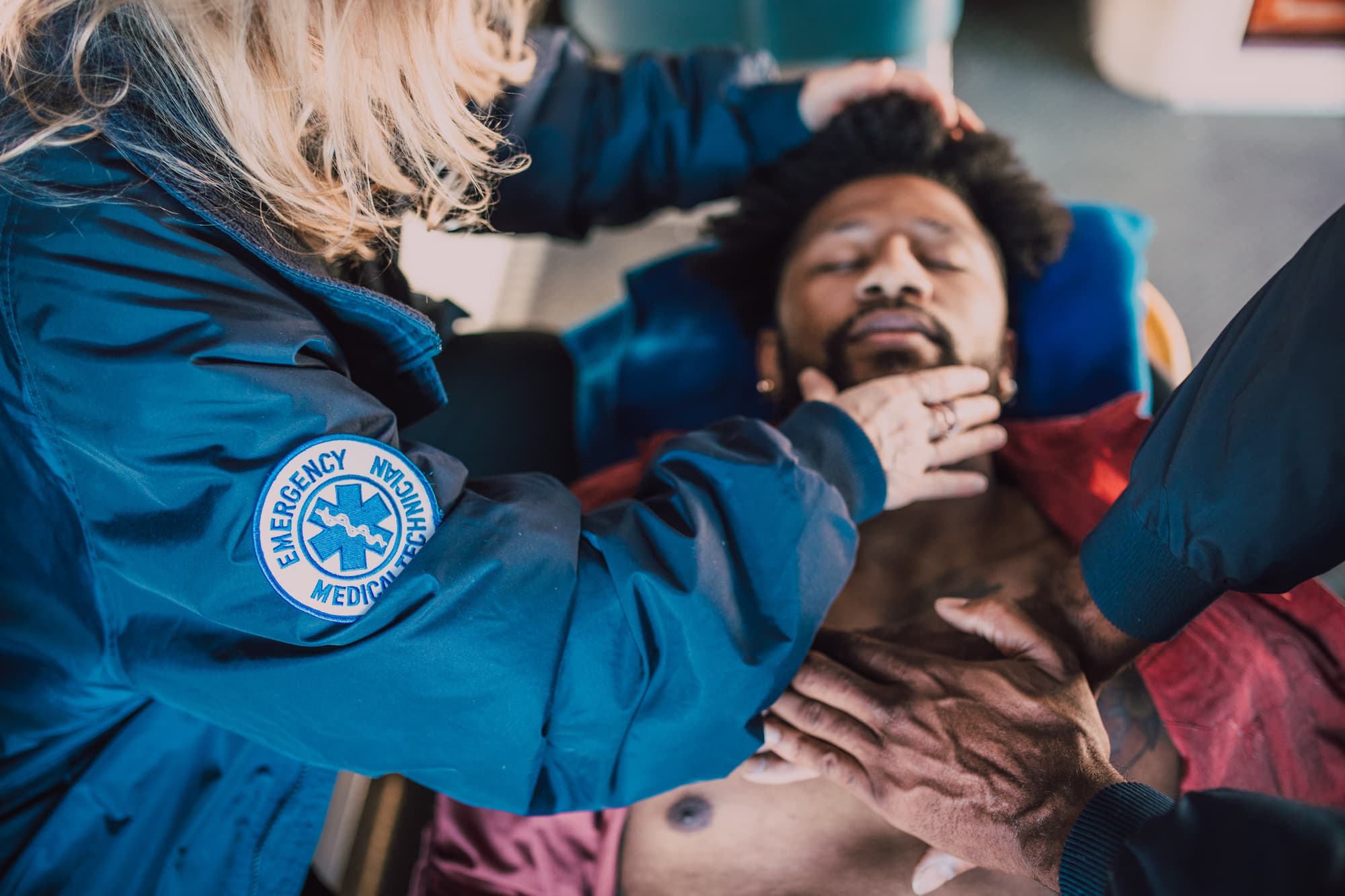Fainting is a transient (short-term) loss of consciousness associated with insufficient oxygen supply to the brain. It is important to distinguish this condition from an epileptic seizure or concussion in order to give proper first aid.
Causes of occurrence
The main difference between fainting and prolonged loss of consciousness is that the latter is a broader concept, consisting of a number of other conditions. Fainting is characterized by the presence of hypoperfusion of the brain and the short duration of the episode.
There are several causes of its occurrence. They have varying degrees of health risk. The main one is a decrease in blood pressure (BP), in which the blood supply to the brain deteriorates. Fainting occurs when the blood pressure falls below 60 mmHg.
Chronic heart failure, rare pulse, bradycardia and low cardiac output also lead to the development of this condition. When the autonomic nervous system is insufficient, peripheral vascular resistance decreases, making it difficult to deliver blood to the organs.
Reflex fainting is associated with a sudden drop in blood pressure when the body changes position from horizontal to vertical. It is the most common cause among others. Inadequate blood flow is sometimes associated with mechanical obstruction. For example, in thromboembolism of the pulmonary artery.
Other causes include a long stay in a stuffy room, at a concert, a party, playing in a casino (associated with a still emotional outburst), too active physical activity, taking some medications, overheating, blood loss.
Symptoms
It is important to know the symptoms of fainting, in order to provide first aid in time. Loss of consciousness, even a short-term one, is dangerous in that it contributes to the injury of the person. Fainting becomes the cause of a traffic accident or leads to fractures, abrasions, wounds.
Three main stages are distinguished:
- Pre-fainting state,
- fainting,
- The post-fainting period.
Typically, fainting usually begins with a pre-fainting state. It varies depending on the age and health of the person. Approaching fainting begins with a feeling of discomfort, clouding, dizziness, tinnitus, darkening of the eyes, and weakness. The patient then loses consciousness. At the same time, he slowly slumps down, “rolling” down the wall. His skin becomes pale and sticky sweat appears.
His pulse is slow and difficult to detect, and his blood pressure is lower than normal. Breathing becomes sparse and shallow. In fainting, the episode of loss of consciousness is brief, not more than 1 minute. Weakness may persist for up to an hour.
Indications for hospitalization
Patients with reflex syncope need not be hospitalized. All others require in-hospital observation by a physician for at least 24 hours. Patients are always admitted to the hospital if they have experienced palpitations, chest pains or sudden headaches before fainting.
Attention is paid to patients with myocardial infarction, with a history of valvular damage. As well as with clinical signs of cervical vein swelling, chronic heart failure. Hospitalization is often indicated for patients over 70 years of age, with changes on the ECG.

Rules of first aid
When the victim loses consciousness, it is quite difficult to visually determine the cause of this condition. Therefore, it is necessary to check the presence of a pulse on the carotid arteries and breathing. This will make sure that the person has no impaired vital functions.
Next, the victim should lie on his back and raise his legs. This can be done by putting clothes or any other objects, which are at hand. Such a position will ensure blood flow to the head and eliminate cerebral hypoperfusion.
It is also necessary to provide access to air, especially in a stuffy room. To do this, you should open the window or vents if it is a casino – where there are usually no windows, you can turn on the air conditioner, unbutton restrictive clothing, the shirt collar, remove tight jewelry from the neck. You can loosen the belt on your pants.
At the pre-faint stage, if you have ammonia on hand, you can moisten a cotton ball and bring it to the victim’s nose. If the person has already lost consciousness, you should not resort to such manipulation, as it may cause burns of the nasal mucosa.
Such emergency measures are carried out not only in children, but also in adults. After the child regains consciousness, you should not immediately raise him on his feet. It is better to let him lie down and fully recover. And afterwards you can drink sweet tea or plain water.
There are several common mistakes that are not only useless, but can also harm others:
- Pat on the cheeks. This method will not help to bring the victim to his senses. The fact is that light blows will not help anything, and stronger ones may cause bruising of soft tissues.
- Splash the face with water. In the warm season, this method is simply useless, but in the cold can cause harm to the person.
- Taking medications. It is forbidden to give any pills to an unconscious victim until specialized medical care is provided.
So, help to a fainting person in the street comes down to the fact that it is necessary to give him a horizontal position, to free him from tight clothing, as well as to provide access to fresh air. If the person does not regain consciousness for more than 5 minutes, you should call and wait for an ambulance.
